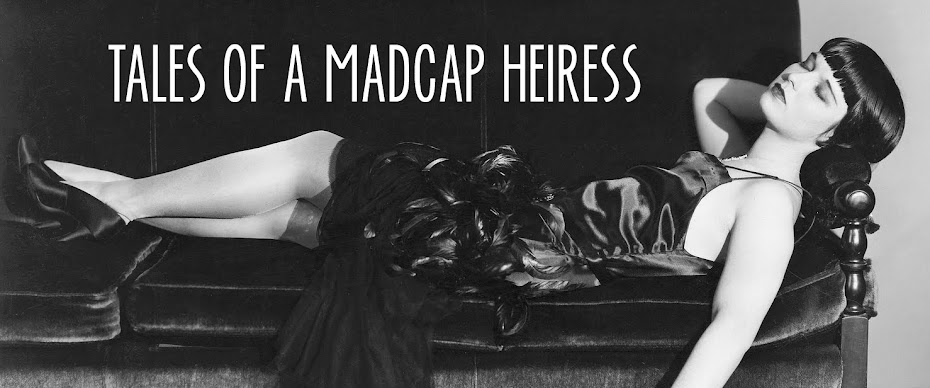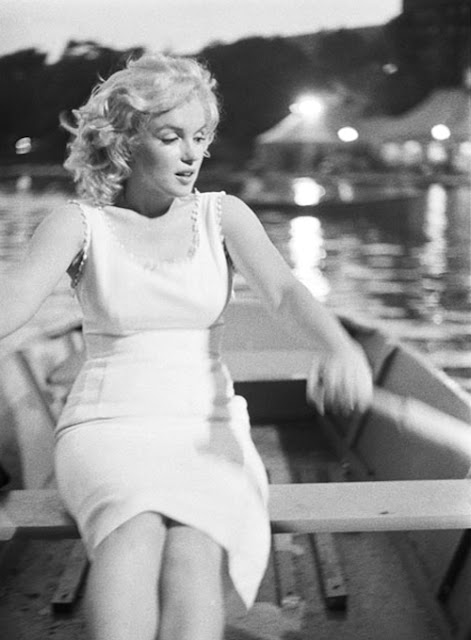Peggy O'Neil, 1914. Photo from here.
Photographs of theatre performers
from the past always intrigue me. So few of them are remembered now yet many
were big stars in their day with legions of fans. One such star was Peggy
O’Neil, an actress who was once so popular that she inspired a
hit song. Yet she has slid into near oblivion, not even earning a Wikipedia entry.
She was born Margaret O’Neil on
June 16, 1898 in Gneeveguilla, Co. Kerry, Ireland (note: there is conflicting information about her birth and early life so I'm going with what was reported by the New York Times). Her family immigrated to
America when she was a child, settling in Buffalo, New York. She began
performing when still little and in 1910 made her professional stage debut in
Chicago as a dancer in The Sweetest Girl in Paris.
Peggy O'Neil with her co-star in Peg O' My Heart, 1914. Photo from here.
O'Neil had a few more small stage roles and starred in some film shorts for the Lubin Manufacturing Company before her big break on September 2, 1913. That day theatre producer Oliver Morosco auditioned more than 400 young girls for the lead in a road production of J. Hartley Manners' comedy Peg O’ My Heart. O’Neil won the part and
the following year was sent to Chicago to star as Peg. The play was a hit and
ran for 26 weeks.
The Chicago audience fell in love
with the girl with the blue eyes, dark curls, and bubbly personality who embodied the
quintessential Irish lass, a popular type on stage at the turn of the century. The play itself proved to be such a hit that at one point eight different versions were in production at the same time. Both Laurette Taylor (who originated the role) and Marion Davies would go on to star in film versions.
O'Neil's turn as Peg led to other roles.
Morosco casting her in two other Chicago productions—A
Tale With a Wag and Mavourneen. Back in New York she starred
on Broadway in The Flame. After a run in Chicago with Patsy on the Wing, she returned to Broadway in 1919 for Tumble. The New York Times singled her out for that last performance as
being “much of the life of the show” and Theatre Magazine said "the other performers might well benefit from watching her acting."
In 1920 she travelled to London
where she had her greatest success playing the title
role in the comedy Paddy The Next Best Thing. Adapted by William Gayer MacKay and Robert Ord from a novel by Gertrude Page, it was the story of a tomboy named Paddy (short for Patricia) whose father had wanted a son but got the next best thing. Opening on April 5, 1920, it ran for more than 850 performances at
the Savoy Theatre, and O'Neil became the darling of London. One reviewer said of O'Neil's performance, "She has something of Ellen Terry's power of communicating her smiles and tears to the audience. I suspect that every young woman in the audience feels, in her heart, that she has been a Paddy."
Yet she had her detractors. On October
20, 1920, the papers reported that O’Neil had been sent a box of poisoned
chocolates. She ate one and was ill for days. Her little dog was not so lucky.
He died that evening after eating one of the candies. Tests later found that the chocolates contained arsenic and strychnine. No suspects were ever arrested.
In 1921, O’Neil inspired Harry Pease, Edward G Nelson, and Gilbert Dodge (two of whom were reportedly trying to court the actress who never married) to write a song in her honor.
If her eyes are blue as skies, that's Peggy O'Neil
If she's smiling all the while, that's Peggy O'Neil
If she walks like a sly little rogue
If she talks with a cute little brogue
Sweet personality full of rascality
That's Peggy O'Neil
With its sweet melody and Irish tones, “Peggy O’Neil” proved to be a huge hit and at the Savoy, the song was played between the show's acts.
The success of Paddy was followed by a role in Mercenary Mary at the London Hippodrome. O'Neil would spend the 1920s primarily in London but did return to New York in 1927 for a part in the Ziegfeld Follies and again in 1930 to star in the comedy Unexpected Husband.
Peggy O'Neil at the height of her popularity, May 1921. Photos from the National Portrait Gallery here.
On September 30, 1928, O'Neil tried out a new medium. She agreed to be "televised" as part of a demonstration of the Baird television system at the National Radio Exhibition outside London. For a half hour she told stories and sang the song "I'm a Little Bit Fonder of You." A couple years later in April of 1930 she gave the first live broadcast interview at the Ideal Home Exhibition in Southampton.
The 1930s saw her star start to fade and her personal life in trouble. After making some bad investments, she declared bankruptcy in 1935. And in 1942 she made news of a different type when she was caught shoplifting a box of biscuits and a jar of chocolate spread from a London shop. She was fined £20.
She spent the war years entertaining the troops but her time in the spotlight was over, and O’Neil withdrew from the public eye. Crippling arthritis confined her to a wheelchair during the last years of her life, and she passed away on January 7, 1960 in London.
I'd like to find more stories about O'Neil. But in the meantime, there are these British Pathe clips of O'Neil that allow us to see her in motion: a scene from Merry Merry from 1929, entertaining at a club in 1926, and relaxing at her English home in 1925. Sweet Peggy O'Neil.












































